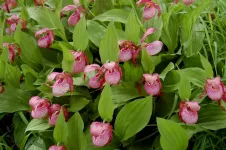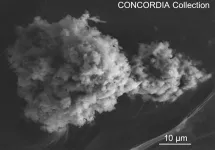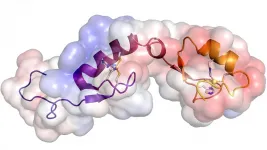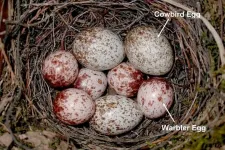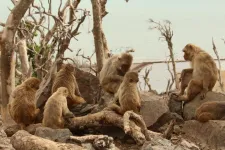(Press-News.org) Orchids of the Boreal zone are rare species. Most of the 28,000 species of the Orchid family actually live in the tropics. In the Boreal zone, ground orchids can hardly tolerate competition from other plants -- mainly forbs or grasses. So they are often pushed into ecotones -- border areas between meadows and forests, or between forests and swamps.
Furthermore, there has been a decline in wild orchids all over North America and Eurasia, caused in part by human-induced destruction of their habitats, the transformation of ecosystems, and the harvesting of flowers from the wild.
In the Novosibirsk region, 30 orchid species have been found, and about 40 in the entire Siberia.
It is no coincidence that many orchids are included in regional and national Red Book lists, with dedicated protected areas created to preserve them. When specialists find high concentrations of orchid species in a small area, it is always a significant discovery, in terms of both science and ecology. A END
Where Siberian orchids thrive: New hotspot of orchids discovered near Novosibirsk
2021-04-08
ELSE PRESS RELEASES FROM THIS DATE:
Research gives new insight into formation of the human embryo
2021-04-08
Pioneering research led by experts from the University of Exeter's Living Systems Institute has provided new insight into formation of the human embryo.
The team of researchers discovered an unique regenerative property of cells in the early human embryo.
The first tissue to form in the embryo of mammals is the trophectoderm, which goes on to connect with the uterus and make the placenta. Previous research in mice found that trophectoderm is only made once.
In the new study, however, the research team found that human early embryos are able to regenerate trophectoderm. They also showed that human embryonic stem cells grown in the laboratory can similarly ...
More than 5,000 tons of extraterrestrial dust fall to Earth each year
2021-04-08
Every year, our planet encounters dust from comets and asteroids. These interplanetary dust particles pass through our atmosphere and give rise to shooting stars. Some of them reach the ground in the form of micrometeorites. An international program conducted for nearly 20 years by scientists from the CNRS, the Université Paris-Saclay and the National museum of natural history with the support of the French polar institute, has determined that 5,200 tons per year of these micrometeorites reach the ground. The study will be available in the journal Earth & Planetary Science Letters from April 15.
Micrometeorites have always fallen on our planet. These interplanetary dust particles from comets or asteroids are particles of a few tenths to hundredths of a millimetre that have passed ...
Research shows cytonemes distribute Wnt proteins in vertebrate tissue
2021-04-08
Scientists have made a pivotal breakthrough in understanding the way in which cells communicate with each other.
A team of international researchers, including experts from the University of Exeter's Living Systems Institute, has identified how signalling pathways of Wnt proteins - which orchestrate and control many cell developmental processes - operate on both molecular and cellular levels.
Various mechanisms exist for cells to communicate with each other, and many are essential for development. This information exchange between cells is often based on signalling proteins that activate specific intracellular signalling cascades to control cell behaviour at a distance.
Wnt proteins are produced by a relatively small group ...
Health impacts of holocaust linger long after survival
2021-04-08
The damaging effects of life under Nazi rule have long been known with many victims having experienced periods of protracted emotional and physical torture, malnutrition and mass exposure to disease. But recent research from the Hebrew University of Jerusalem show that even for those who survived, their health and mortality continued to be directly impacted long after the end of the Holocaust.
The study, led by Drs. Iaroslav Youssim and Hagit Hochner from the School of Public Health at the Faculty of Medicine and published in the American Journal of Epidemiology, investigated mortality rates from ...
How to tame a restless genome
2021-04-08
Short pieces of DNA--jumping genes--can bounce from one place to another in our genomes. When too many DNA fragments move around, cancer, infertility, and other problems can arise. Cold Spring Harbor Laboratory (CSHL) Professor & HHMI Investigator Leemor Joshua-Tor and a research investigator in her lab, Jonathan Ipsaro, study how cells safeguard the genome's integrity and immobilize these restless bits of DNA. They found that one of the jumping genes' most needed resources may also be their greatest vulnerability.
The mammalian genome is full of genetic elements that have the potential to move from place to place. One type is an LTR retrotransposon (LTR). In normal cells, these elements don't ...
Religion follows patterns of politicization during COVID-19
2021-04-08
ITHACA, N.Y. - Research shows people turn to religion in times of fear and uncertainty - and March 2020 was one of those times.
To find the impact of religion during the early days of the COVID-19 pandemic in the United States, Landon Schnabel, the Robert and Ann Rosenthal Assistant Professor of Sociology in the College of Arts and Sciences, analyzed responses from 11,537 Americans surveyed March 19-24, 2020, shortly after the World Health Organization declared COVID-19 a global health pandemic.
Religion protected mental health of members of several ...
Filling the gaps
2021-04-08
Image inpainting is a computer vision technique in which pixels missing from an image are filled in. It is often used to remove unwanted objects from an image or to recreate missing regions of occluded images. Inpainting is a common tool for predicting missing image data, but it's challenging to synthesize the missing pixels in a realistic and coherent way.
Researchers at the University of Tokyo have presented a frequency-based inpainting method that enables the use of both frequency and spatial information to generate missing image portions. Publishing in the Journal of Electronic Imaging (JEI), Hiya Roy et al. detail the technique in " END ...
How people decide when they have so many choices
2021-04-08
COLUMBUS, Ohio - It's one thing to decide among two or three snacks available at a friend's house. But what do people do when they're faced with a vending machine offering 36 different options?
A new study using eye-tracking technology suggests that the amount of time people spend looking at individual items may actually help them decide. Findings showed that people tended to choose snacks they spent more time looking at, sometimes even over snacks that they rated more highly.
"We could do pretty well predicting what people would choose based just ...
Team cracks eggs for science
2021-04-08
CHAMPAIGN, Ill. -- Avian brood parasites lay their eggs in the nests of other bird species, forcing the hosts to do the hard work of raising the unrelated young. A team of scientists wanted to simulate the task of piercing an egg - a tactic that only a minority of host birds use to help grasp and eject the foreign eggs. Their study offers insight into some of the physical challenges the discriminating host birds face.
The new findings appear in the Journal of Experimental Biology.
Take cowbirds, for example. Their eggs look nothing like the host birds' eggs, "yet most of their hosts do not reject the parasite eggs," said study co-author Mark Hauber, a professor of evolution, ecology and behavior at the ...
After Hurricane Maria, rhesus macaques in Puerto Rico sought out new social relationships
2021-04-08
Natural disasters have a way of bringing people together to rebuild. Now, researchers reporting in the journal Current Biology on April 8 have found that the same is true for rhesus macaques.
The study reports that after a major hurricane hit Puerto Rico, macaques living on Cayo Santiago Island became more tolerant of each other and sought new social connections. The findings are based on careful study of social connections among Cayo Santiago Island's macaques before and after Hurricane Maria, a devastating storm that left more than 3,000 people dead.
"The macaques ...
